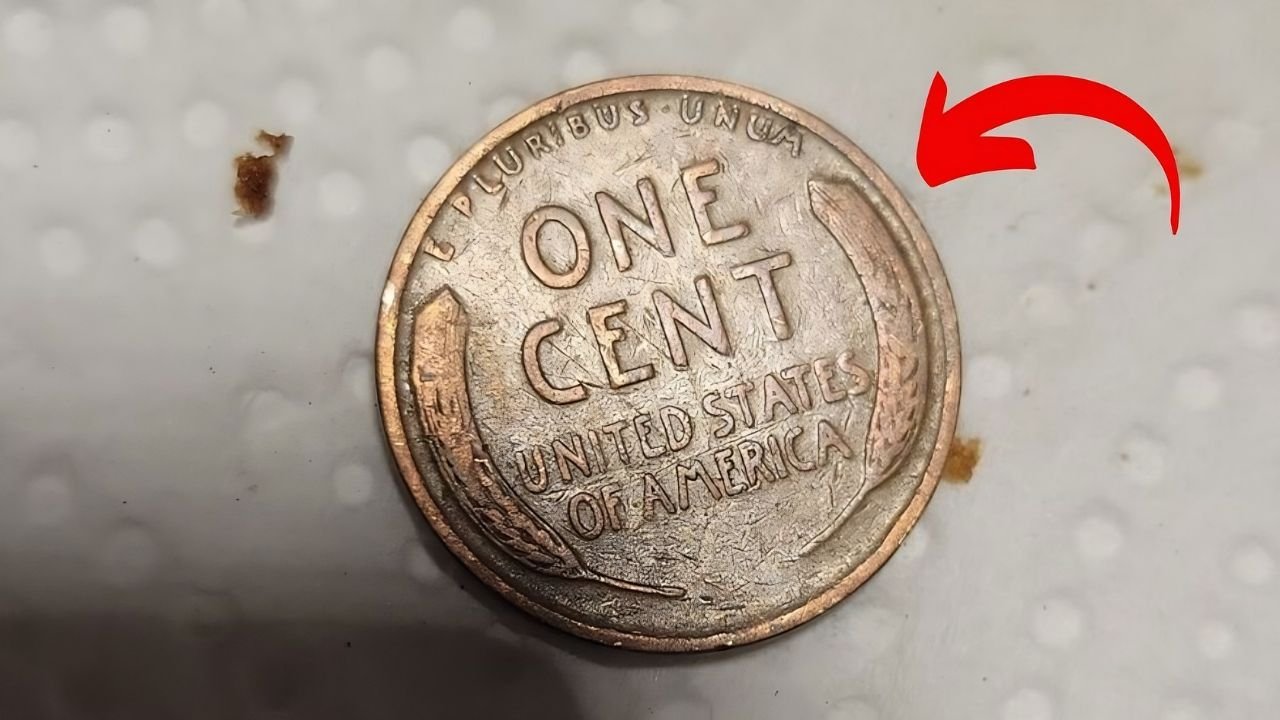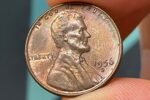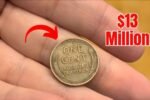The Lincoln Wheat Penny Valued at $13 Million : Have you ever glanced at a penny and thought, “Could this actually be worth millions?” It might sound like a long shot, but believe it or not, it’s possible. One version of the Lincoln Wheat Penny—specifically the 1943 copper edition—has sold for as much as $13 million. Yes, million with an M.
This tiny coin, which you might mistake for spare change, is actually one of the rarest and most valuable coins in U.S. history. The craziest part? It wasn’t even supposed to exist.
A Wartime Mix-Up That Created a Legend
Let’s rewind to 1943. America was deep in World War II, and copper was in high demand for weapons and equipment. To save materials for the war effort, the U.S. Mint made a major change: they started producing pennies using zinc-coated steel instead of copper.
But here’s where it gets interesting—some leftover copper blanks from 1942 accidentally got mixed in at the mint. Those few rogue coins were stamped with the 1943 date and slipped into circulation, unnoticed at the time. These unintentional creations—just a few dozen in existence—turned into one of the biggest jackpot finds in coin collecting.
Why These Pennies Are Worth a Fortune
So why would someone pay millions for a penny? It comes down to rarity, history, and condition. Experts believe only 20 to 30 authentic 1943 copper pennies exist. When you add in their fascinating backstory and connection to World War II, they become the holy grail for collectors.
The best-preserved examples have fetched astronomical prices. One pristine specimen reportedly sold for nearly $13 million, placing it among the most valuable coins ever auctioned.
Think You’ve Found One? Here’s How to Check
Spotting one of these ultra-rare coins takes a sharp eye—and a good magnet. First, look for the date 1943 below Lincoln’s portrait. Then, try the magnet test. Since most 1943 pennies were made from steel, they’ll stick to a magnet. A genuine copper 1943 penny won’t.
Still, be careful—there are fakes out there. Some are steel pennies coated with copper, while others are altered 1948 coins with reshaped digits. That’s why professional authentication is a must before you celebrate.
Authentication: Don’t Skip This Step
If you think you’ve struck gold (or copper, in this case), your next move should be contacting a professional coin grading service. These experts will analyze the coin’s metal composition, weight, and other details to determine if it’s the real deal.
Without this step, you might end up with a clever counterfeit—or worse, sell a rare treasure for pocket change.
Real-Life Finds That Changed Lives
Here’s the part that makes this story even more fun—people have actually found these coins in the wild. Some stumbled upon them in inherited coin collections. Others discovered them in rolls of bank pennies or received them as everyday change. For a lucky few, that casual transaction turned into a once-in-a-lifetime payday.
It’s proof that even today, rare coins like the 1943 copper penny are still out there, waiting to be discovered.
Other Lincoln Pennies That Could Be Worth Thousands
While the 1943 copper penny is the crown jewel, it’s not the only Lincoln cent with serious value. Here are a few more you should keep an eye out for:
- 1909-S VDB: The original edition with the designer’s initials—worth over $100,000.
- 1944 Steel Penny: Another wartime mistake, this one can bring in $75,000 to $500,000.
- 1955 Double Die Penny: Look closely—the lettering appears doubled. Value? Up to $50,000.
A Modern-Day Treasure Hunt
This isn’t just about coin collecting—it’s about the thrill of the hunt. Every time you get change at the store or dig through an old coin jar, you might be holding a million-dollar piece of history. The odds are slim, sure—but they’re not zero.
So next time you spot a penny, don’t toss it aside. Take a closer look. That small copper coin might just be your ticket to a life-changing discovery.
Final Thought
In a world full of digital transactions, the idea that a forgotten penny could be worth millions feels like something out of a movie. But for a few lucky Americans, that dream has already come true. Who knows—maybe you’re next.




